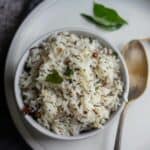This dried neem flower rice, also known as vepampoo sadam, is a traditional South Indian recipe known for its digestive benefits. It’s a quick and comforting meal, perfect for soothing the stomach. The earthy flavors of dried neem flowers pair beautifully with rice and spices, creating a simple yet nourishing dish.
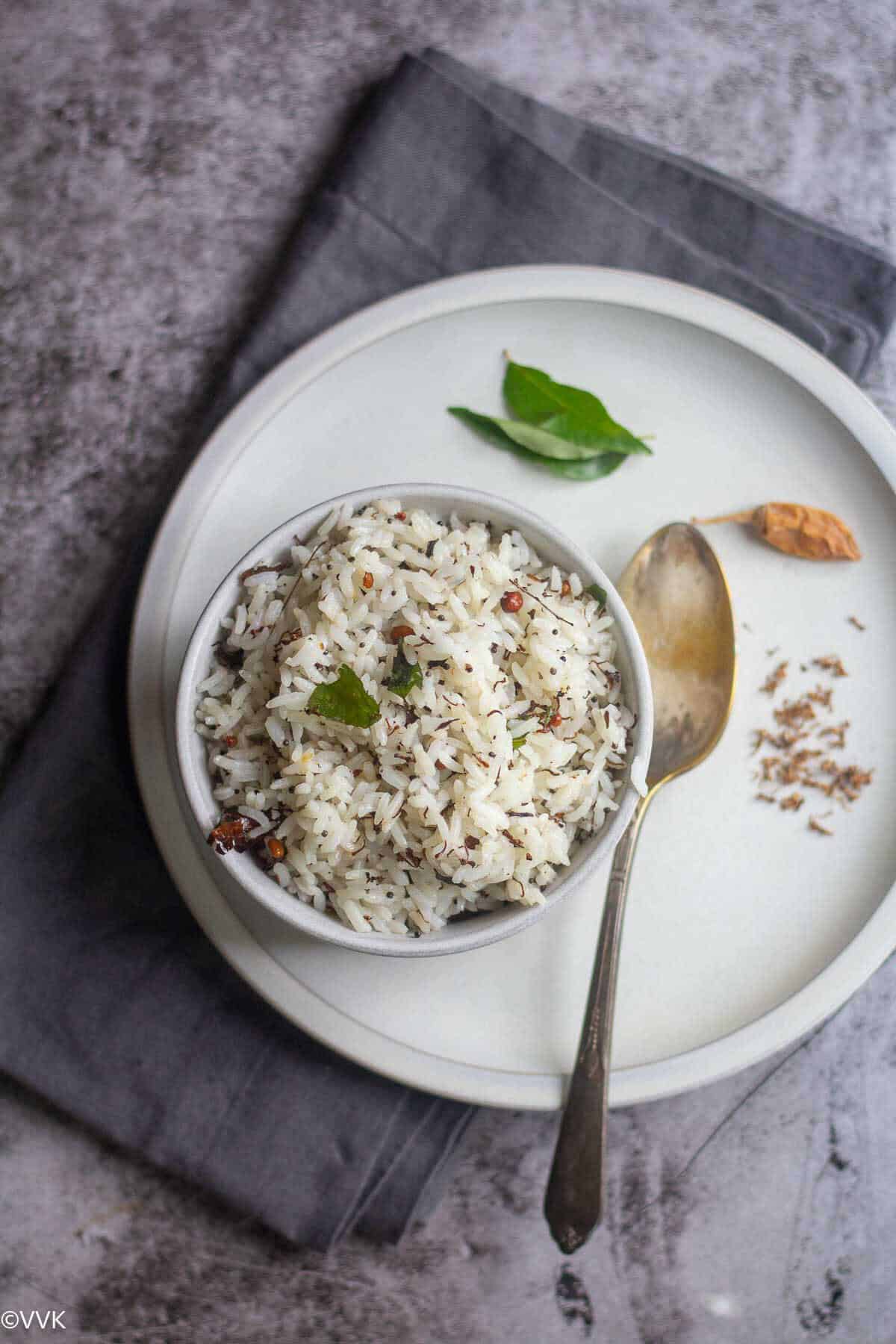
The neem tree truly lives up to its reputation as an Akshaya Patra—an inexhaustible source of natural medicine. Every part of this tree has a purpose, from its tender and mature leaves to its flowers and seeds, which are pressed for oil. As discoverneem.com points out, about 75% of Ayurvedic remedies incorporate neem in some form! Often called “the village pharmacy,” the neem tree holds a special place in Indian homes, and I wholeheartedly agree with this nickname.
Jump to:
Growing up, I remember eating tender neem leaves to help ward off stomach germs. We also used neem branches as natural toothbrushes and applied ground neem leaves as face and hair masks. Neem oil is a fantastic coolant and even helps relieve stomach aches. During Ugadi celebrations, we use fresh neem flowers to make pachadi. Honestly, I could go on and on about its countless uses!
Today’s recipe—vepampoo sadam, or rice made with dried neem flowers—is a quick home remedy for digestive issues. Neem flowers are known for their digestive benefits, which is why I always keep them on hand. This time, I stocked up with two large packs of dried neem flowers from India. They have a long shelf life, making them an essential ingredient in my pantry. You can also check out my neem flower rasam aka vepampoo rasam.
Ingredients needed
To make dried neem flower rice (vepampoo sadam), you’ll need raw rice, water, oil (preferably gingelly oil), sun-dried chilies, mustard seeds, urad dal, chana dal, curry leaves, dried neem flowers, and salt. These simple ingredients come together to create a flavorful and comforting dish that’s both healing and satisfying. Please check the recipe card for exact measurements.
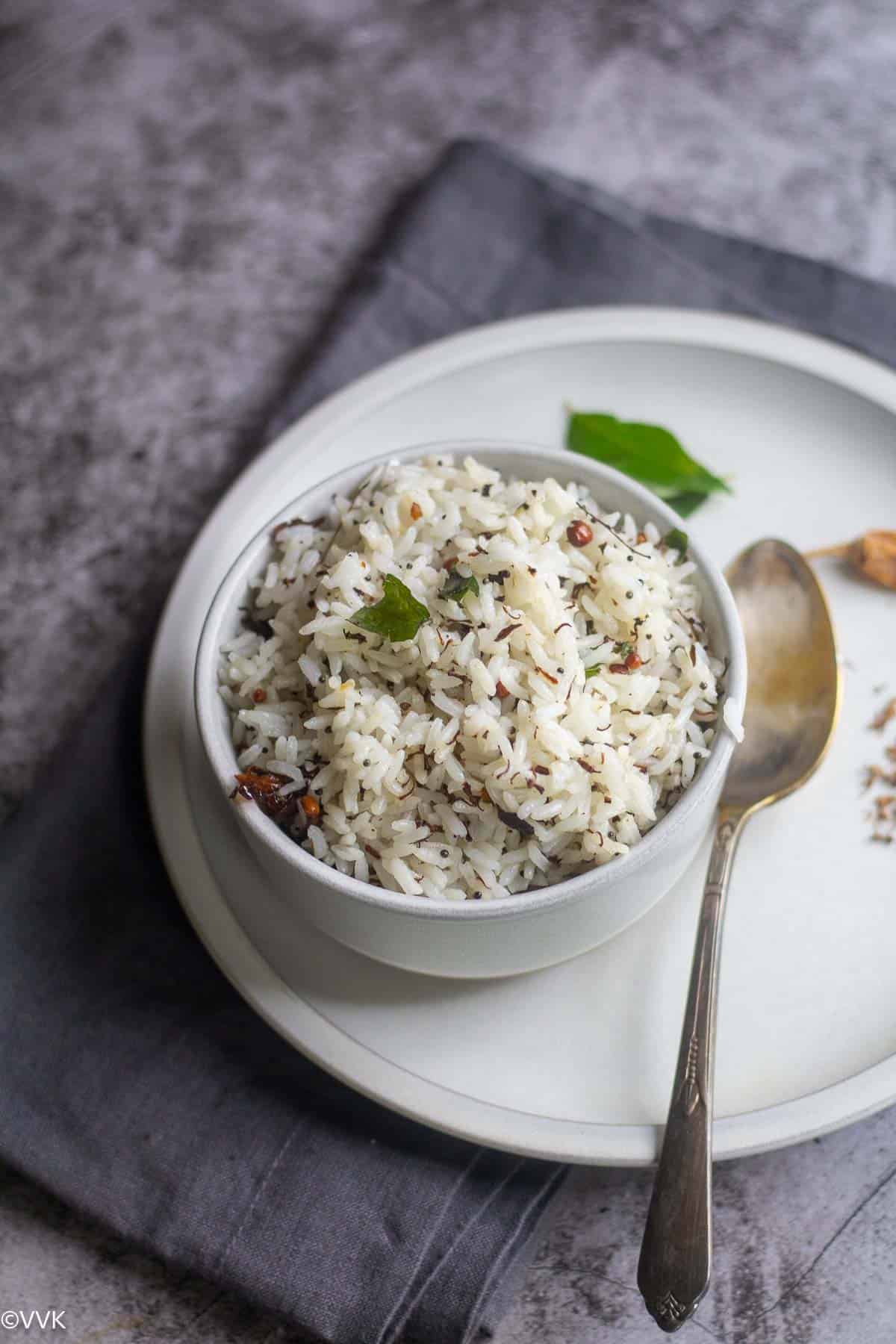
Frequently asked questions
I’ve tried this recipe with regular raw rice, brown rice, and millet. You can also use parboiled rice. For inspiration, try my garlic rice recipe, which features brown rice.
I usually bring them from India. During Telugu and Tamil New Year, you can often find them at Indian grocery stores in the US.
I haven’t tried this recipe with fresh neem flowers, so I’m not sure.
Neem flowers have a mild bitterness that’s balanced by spices and rice, making it surprisingly subtle and tasty.
Definitely! You can use fewer dried chilies or skip them altogether for a milder version.
How to make dried neem flower rice
- To prepare dried neem flower rice, start by cooking the rice using your preferred method. I cooked it with twice the amount of water (1:2, rice-to-water ratio) in a pressure cooker, using the pot-in-pot method, and let it cook for three whistles. Once done, let the pressure release naturally, then set the rice aside.
- Heat 2 tablespoons of oil in a pan or kadai. Shallow-fry the sun-dried chilies until they turn a brownish-black color, turning them occasionally to ensure even cooking. Remove them and set aside.
- In the same oil, temper the mustard seeds, urad dal, and chana dal. When the mustard seeds start to splutter, add the curry leaves and the dried neem flowers. Shallow-fry until the dried neem flowers become nicely brown and crisp.
- Reduce the heat to low, then add the cooked rice along with the salt. Gently mix everything. Crush the sun-dried chilies lightly and add them to the rice, mixing again.
- The dried neem flower rice is now ready. Serve hot with raita, such as cilantro raita or danger pachadi.
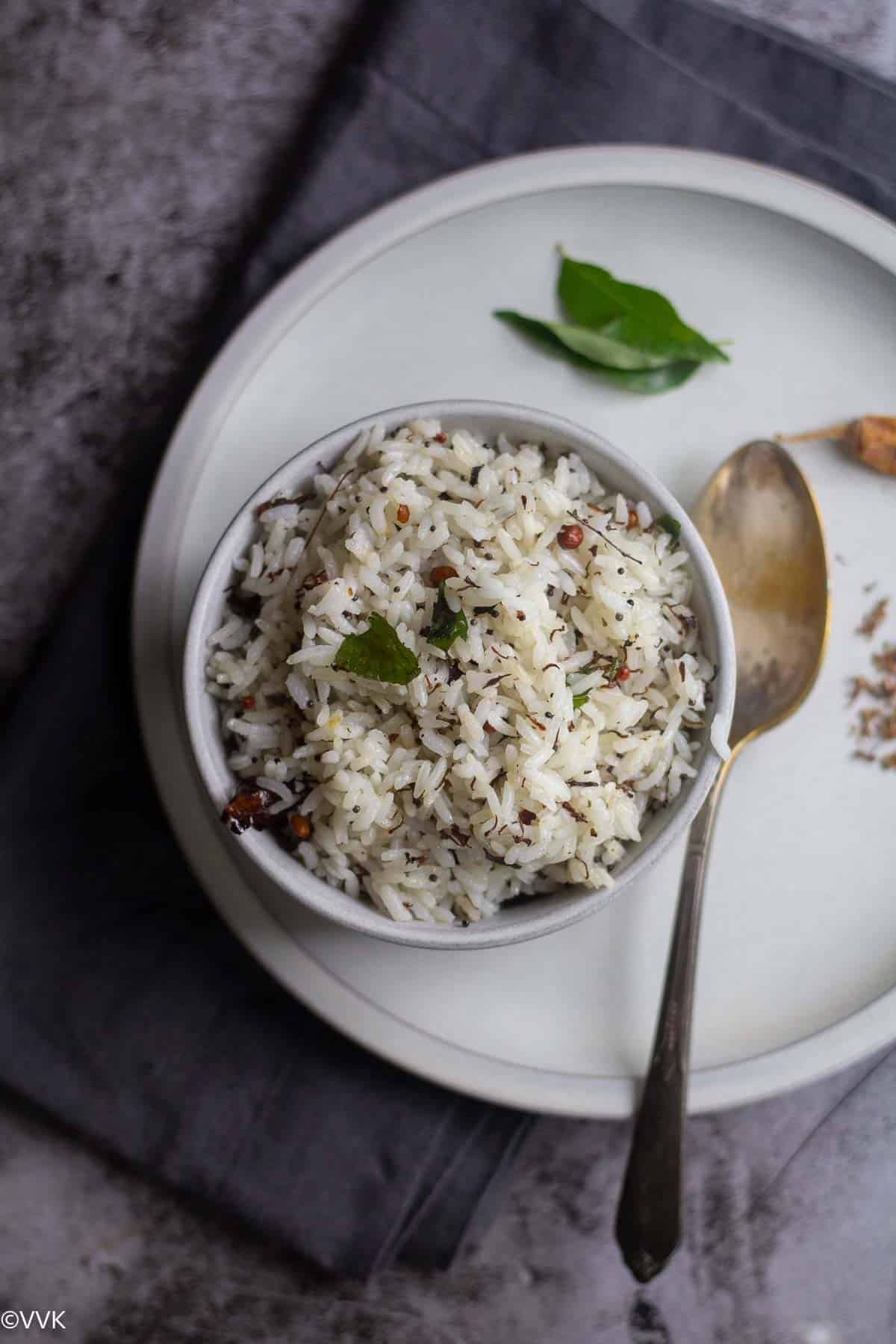
Recipe Notes
- For this quantity, you can use up to 1.5 tablespoons of dried neem flowers, if desired.
- Since the sun-dried chilies I used were already salted, I added only ½ teaspoon of salt; adjust this to your taste.
- If you’re making this rice to alleviate stomach ailments, you can skip the dried chilies and use ½ teaspoon of freshly ground black pepper for a milder version.
More variety rice recipes
📖 Recipe
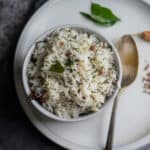
Pin Recipe
Print Recipe
Vepampoo Sadam | Dried Neem Flowers Rice
This dried neem flower rice, also known as vepampoo sadam, is a traditional South Indian recipe known for its digestive benefits. It’s a quick and comforting meal, perfect for soothing the stomach. The earthy flavors of dried neem flowers pair beautifully with rice and spices, creating a simple yet nourishing dish.
Servings: 4
Calories: 154kcal
Ingredients
Measurement Details: 1 tbsp = 15ml; 1 tsp = 5ml ; 1 cup = 240ml;
Instructions
-
To prepare dried neem flower rice, start by cooking the rice using your preferred method. I cooked it with twice the amount of water (1:2, rice-to-water ratio) in a pressure cooker, using the pot-in-pot method, and let it cook for three whistles. Once done, let the pressure release naturally, then set the rice aside.
-
Heat 2 tablespoons of oil in a pan or kadai. Shallow-fry the sun-dried chilies until they turn a brownish-black color, turning them occasionally to ensure even cooking. Remove them and set aside.
-
In the same oil, temper the mustard seeds, urad dal, and chana dal. When the mustard seeds start to splutter, add the curry leaves and the dried neem flowers. Shallow-fry until the dried neem flowers become nicely brown and crisp.
-
Reduce the heat to low, then add the cooked rice along with the salt. Gently mix everything. Crush the sun-dried chilies lightly and add them to the rice, mixing again.
-
The dried neem flower rice is now ready. Serve hot with raita, such as cilantro raita or danger pachadi.
Video
Notes
- For this quantity, you can use up to 1.5 tablespoons of dried neem flowers, if desired.
- Since the sun-dried chilies I used were already salted, I added only ½ teaspoon of salt; adjust this to your taste.
- If you’re making this rice to alleviate stomach ailments, you can skip the dried chilies and use ½ teaspoon of freshly ground black pepper for a milder version.
Nutrition
Calories: 154kcal | Carbohydrates: 20g | Protein: 2g | Fat: 7g | Saturated Fat: 1g | Polyunsaturated Fat: 2g | Monounsaturated Fat: 5g | Trans Fat: 0.03g | Sodium: 295mg | Potassium: 34mg | Fiber: 1g | Sugar: 0.2g | Vitamin A: 114IU | Vitamin C: 25mg | Calcium: 16mg | Iron: 0.3mg
I am not a nutritionist. The nutritional information is provided as a courtesy and is an estimate only. It varies depending upon the product types or brands.
Originally posted in 2015, this recipe has now been updated with a video, fresh photos, and a brand-new FAQ section!


